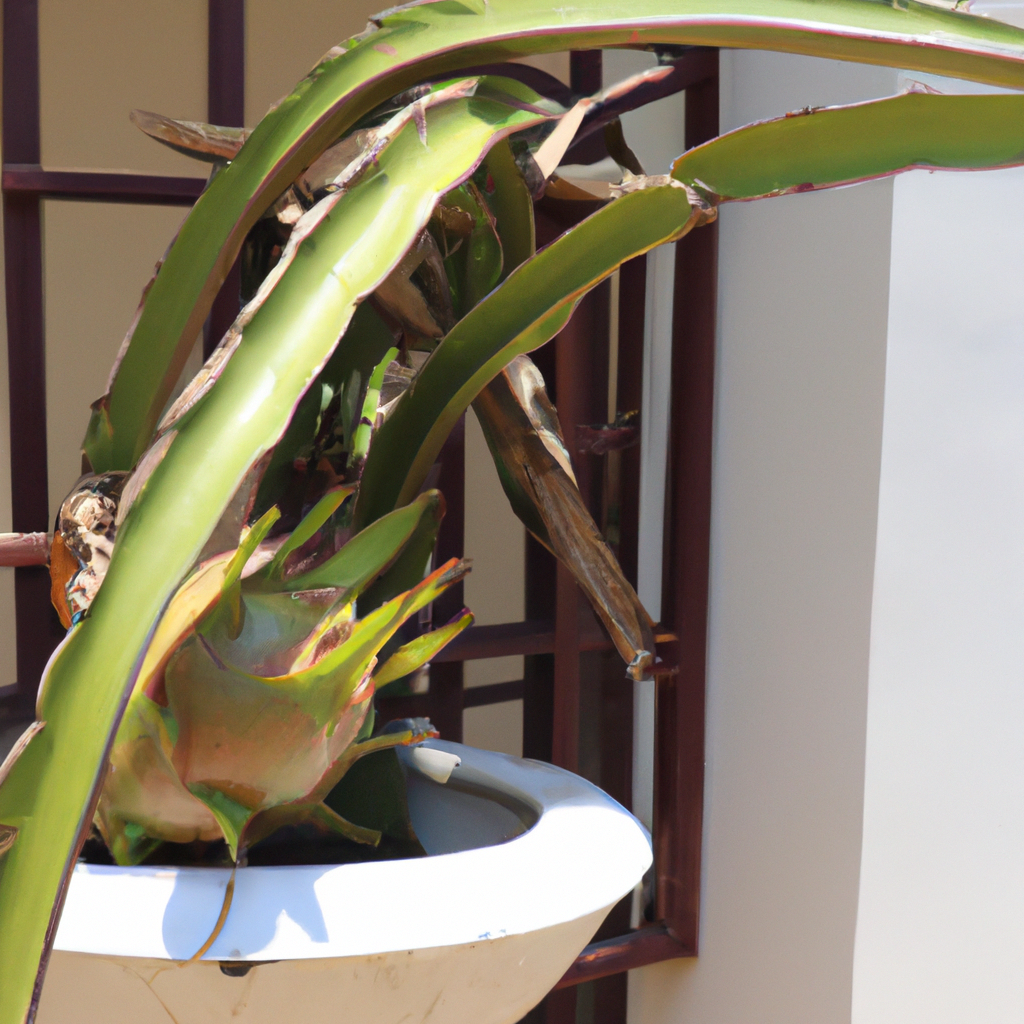Dragon fruit, also known as pitahaya or strawberry pear, is a vibrant and exotic fruit that has gained popularity in recent years. Its unique appearance and delicious taste make it a favorite among fruit enthusiasts. If you’re interested in growing your own dragon fruit, this comprehensive guide will provide you with all the information you need to get started. From understanding the dragon fruit plant’s growth habits to learning how to grow it from seeds or cuttings, we’ll cover it all. Let’s dive in!
What Is Dragon Fruit Plant?
Before we delve into the process of growing dragon fruit, it’s essential to understand the plant itself. Dragon fruit is a type of tropical cactus that belongs to the Hylocereus and Selenicereus genera. It is native to Central America but is now cultivated in various parts of the world, including Southeast Asia, Australia, and the United States. The plant features distinctive climbing or sprawling vines with triangular stems that are covered in spines. The fruit itself is a colorful and elongated oval shape, with a scaly outer skin and a sweet, juicy interior filled with tiny black seeds.




Dragon Fruit Varieties
There are several different varieties of dragon fruit trees, each with its unique characteristics. Here are a few popular types:
Hylocereus undatus: This is the most common type of dragon fruit, featuring white flesh and pink or red skin. It has a mild, slightly sweet flavor and is often referred to as the “white-fleshed dragon fruit.”
Hylocereus costaricensis: Also known as the “Costa Rican pitaya,” this variety has red flesh and red or pink skin. It has a sweeter taste compared to the white-fleshed dragon fruit.
Hylocereus polyrhizus: The “red-fleshed dragon fruit” has vibrant red flesh and pink or red skin. It has a more intense and sweet flavor profile.
Dragon Fruit Propagation
Dragon fruit can be propagated in two main ways: from seeds or from cuttings. Both methods have their advantages and can be successful with the right care and conditions.
How to Grow Dragon Fruit from Seeds?
Growing dragon fruit from seeds can be a rewarding and cost-effective method. Here’s a step-by-step process to help you grow dragon fruit from seeds:
Seed selection: Obtain fresh dragon fruit seeds from a reputable source or extract them from a ripe fruit. Rinse the seeds thoroughly to remove any pulp or debris.
Pre-germination treatment: To enhance germination, soak the seeds in water overnight or scarify them by gently nicking the outer seed coat with a sharp knife.

Planting the seeds: Fill a seed tray orsmall pots with a well-draining potting mix. Plant the seeds about half an inch deep and cover them with a thin layer of soil.
Provide warmth and moisture: Place the seed tray in a warm location with temperatures around 75-85°F (24-29°C). Maintain consistent moisture by misting the soil regularly.
Transplanting seedlings: Once the seedlings develop several sets of true leaves, they can be transplanted into larger pots or the garden. Handle the seedlings carefully to avoid damaging the delicate roots.
Caring for young plants: Water the seedlings regularly, ensuring that the soil remains evenly moist but not waterlogged. Provide partial shade during the hottest part of the day to prevent sunburn.
How to Grow Dragon Fruit from Cuttings?
Growing dragon fruit from cuttings is a common and straightforward propagation method. Follow these steps to propagate dragon fruit from cuttings:
Obtain a cutting: Take a healthy cutting from a mature dragon fruit plant. Choose a segment that is at least 12-18 inches long and has several nodes.
Callusing: Allow the cut end of the cutting to dry out and callus for a few days. This helps prevent rotting when the cutting is planted.
Planting the cutting: Fill a large pot or directly plant the cutting in the ground, burying it about 6-8 inches deep. Position the cutting in a way that the end with the callus faces upward.
Provide support: Install a trellis or stake near the cutting to support its growth. As the cutting develops roots and starts growing, gently guide it towards the support structure.
Watering and care: Water the cutting regularly, keeping the soil consistently moist but not waterlogged. Once the cutting establishes roots, it will require less frequent watering.
Transplanting: After the cutting has grown into a healthy plant with a well-established root system, it can be transplanted into a larger pot or directly into the garden.
Dragon Fruit Plant Care
Proper care and management are crucial for the overall health and productivity of your dragon fruit cactus. Here are some essential tips to keep in mind:
Watering: Dragon fruit cacti require regular watering, especially during the growing season, which is typically summer. Water deeply, allowing the soil to dry out slightly between watering sessions. Be cautious not to overwater, as it can lead to root rot.
Fertilization: Feed your dragon fruit cactus with a balanced, slow-release fertilizer formulated for cacti and succulents. Apply the fertilizer according to the package instructions during the growing season.
Pruning: Regular pruning helps maintain the shape and size of your dragon fruit cactus. Remove any dead or diseased branches, as well as excessive growth to ensure better airflow and light penetration.
Pest and disease control: Monitor your dragon fruit cactus for common pests such as scale insects or mealybugs. Treat infestations promptly with organic pest control methods or insecticidal soaps. Ensure proper air circulation and avoid overwatering to prevent fungal diseases.
Support and trellising: As your dragon fruit cactus grows, provide sturdy support such as a trellis or a sturdy fence. Secure the branches to the support structure to prevent breakage.
Harvesting: Dragon fruit plants typically start producing fruit within two to three years. Harvest the ripe fruit by gently twisting it off the stem. The fruit should easily detach from the plant when it is fully mature.
FAQs
Q: How long does it take to grow a dragon fruit?
A: The time it takes for a dragon fruit plant to mature and produce fruit varies. Generally, it can take between two to three years for a dragon fruit plant to start bearing fruit.
Q: Is dragon fruit hard to grow?
A: Dragon fruit is relatively easy to grow, especially in tropical and subtropical regions. With proper care and suitable growing conditions, it can thrive and produce abundant fruit.
Q: Can dragon fruit survive winter?
A: Dragon fruit plants are sensitive to cold temperatures and frost. They require protection or should be grown in regions with mild winters. In colder climates, it is best to grow dragon fruit in pots and bring them indoors during winter or provide them with appropriate insulation.
Q: What is the lifespan of a dragon fruit plant?
A: A well-maintained dragon fruit plant can have a lifespan of 15-20 years. With proper care, regular pruning, and suitable growing conditions, it can continue producing fruit for many years.
Conclusion
Growing dragon fruit can be an exciting and rewarding experience. By following the steps outlined in this guide, you can cultivate your own dragon fruit plants and enjoy the delicious fruits they produce. Whether you choose to grow them in pots or in the ground, providing them with the right conditions, proper care, and patience will yield a bountiful harvest.
So, roll up your sleeves, get your gardening tools ready, and embark on the journey of growing your very own dragon fruit oasis. Remember, gardening is not just about the end result. It’s about the joy and satisfaction you get from nurturing a plant from a seed or a cutting into a flourishing, fruit-bearing plant. It’s about the lessons you learn along the way – patience, perseverance, and the beauty of nature.
Happy growing!

Hi, I’m King Phils, a Dragon Fruit enthusiast and blogger. Welcome to my website, where I share everything I know and love about this amazing fruit.